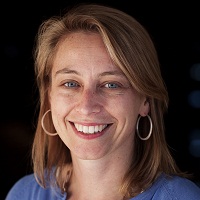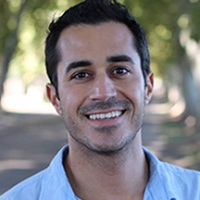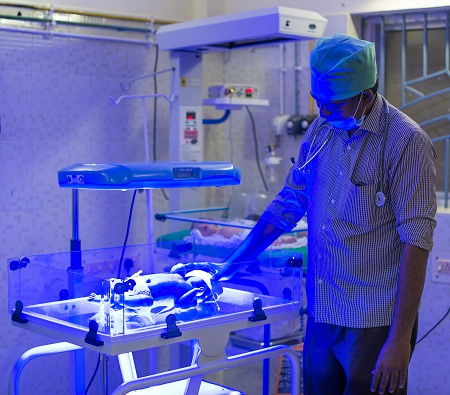With Sales Up, D-Rev Doubles Down (Part 1): Launch of upgraded phototherapy unit brings hopes of expanded market
In Part 1 of our two-part update on D-Rev, a nonprofit medical device development company based in San Francisco, we look at the organization’s decision to launch a new product this week and their continuing manufacturing and sales partnership with a for-profit firm in India. In Part 2, we’ll give D-Rev’s take on markets and marketing.
No one can accuse D-Rev’s leaders of resting on their laurels.
On Tuesday they launched an updated version of their phototherapy device used to treat severe infant jaundice in the developing world – even though the original device is only two years old and December sales figures were the best in its history.
The new version is called Brilliance Pro; the older version has been renamed Brilliance Classic. The update, explains D-Rev CEO Krista Donaldson, “reflects D-Rev’s design process in action: Learning from our customers and updating our products to meet and exceed their expectations.”
More than 1,100 Brilliance Classic units have been sold in 23 countries, with 43,000 babies treated for jaundice and 560 “deaths and disabilities averted,” according to D-Rev. (Infant jaundice is a yellow discoloration in a newborn caused by too much bilirubin in the blood. If detected early, it can be treated by putting the infant under intense blue light, such as that provided by the Brilliance products.)
 Brilliance Pro recently won Best in Show across all product categories and prices at India’s largest neonatal conference, NEOCON. “People were really taken aback by how it looked,” said AJ Viola, D-Rev’s neonatal jaundice initiative product manager.
Brilliance Pro recently won Best in Show across all product categories and prices at India’s largest neonatal conference, NEOCON. “People were really taken aback by how it looked,” said AJ Viola, D-Rev’s neonatal jaundice initiative product manager.
“From a design point of view, that’s great,” he said. “From a market point of view, we’re really starting to see the power in aesthetics and sleekness of design.”
Donaldson (left) added, “Everybody wants a beautiful, high-functioning product. It doesn’t matter what your income level is.”
But the redesign is about more than looks. “The challenge for us is designing something that is context-specific. Ultimately, it’s about designing a great product for your customers,” Donaldson said. “You can see customers demanding more, demanding better aesthetics (and) greater functionality. And we’re starting to see, hopefully, greater change in the sector of groups responding to that.” While D-Rev’s phototherapy units are designed to function in low-income hospitals, she said, they would fit “in any hospital in the world.”
Upgrades, in addition to the new look, include an adjustable light intensity setting and a tilt feature. D-Rev will continue to sell the Classic for $400, with the Pro priced at $500.
 Viola (left) said, “We designed Brilliance Pro for maximum scale. We tried to design it so we could accommodate rapid growth in sales. Brilliance Classic is a little more time intensive to manufacture than Brilliance Pro will be. We wanted to be able to maximize the capacity of our manufacturing partner, to set ourselves up for success in the long term.”
Viola (left) said, “We designed Brilliance Pro for maximum scale. We tried to design it so we could accommodate rapid growth in sales. Brilliance Classic is a little more time intensive to manufacture than Brilliance Pro will be. We wanted to be able to maximize the capacity of our manufacturing partner, to set ourselves up for success in the long term.”
That partner is Phoenix Medical Systems, a for-profit Indian company that not only builds, but sells Brilliance.
“We work very closely with (Phoenix) to try to come up with sales projections,” Viola said. “For this next year, we’re expecting to sell around 800 units or so. In terms of the split between Brilliance Classic and Brilliance Pro, we’re not entirely sure yet. We’re optimistic that introducing Brilliance Pro will expand the market for us, but it’s a bit of a live experiment, too.”
About 80 to 85 percent of all Brilliance lights are sold in India, which has 20 percent of all live births in the world, Donaldson said. “If you’re working on any neonatal issue and you can do well in India, you’re really starting to take a chunk out of that neonatal issue.”
Included in D-Rev’s market are the three Indian states with the country’s largest poor populations: Uttar Pradesh, Bihar and Madhya Pradesh.
 “We’re very strategic in how we think about markets relative to social impact,” she said. And the same goes for D-Rev’s selection of a manufacturing and sales partner.
“We’re very strategic in how we think about markets relative to social impact,” she said. And the same goes for D-Rev’s selection of a manufacturing and sales partner.
“We were very deliberate (in choosing Phoenix),” Donaldson said. “We knew we wanted to focus on India because of the numbers. … We did significant due diligence in India, looking at all the neonatal medical device makers and sellers, and who responds to servicing requests, who has good quality, all the sorts of things you really care about in a partner.” Phoenix’s servicing response time and strong social component made them an obvious choice, she said, even above some bigger, better-known groups.
(Brilliance Classic in the field, right. Photo by Tina Loveridge)
“Our model is only achievable through true partnerships,” Donaldson said. “I stress that because we’re in a great partnership with Phoenix. … While we talk to customers, our products only get to hospitals because they are able to distribute them and have the local knowledge and understand all that much better than us.
“Sometimes it’s hard to get negative feedback from your users, especially for a foreigner. This is something we really stress in terms of how we ask questions, who asks the questions. … There’s a culture around hospitality to visitors. They don’t want to be rude.”
Kyle Poplin is editor of NextBillion Health Care.
- Categories
- Health Care
